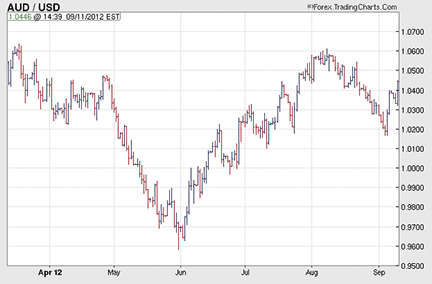
FIGURE 1: FOUR DECIMAL PLACES. The AUD/USD is quoted to four decimal places on this chart. This is also true of other pairs and crosses, except the JPY pairs and crosses that are quoted to two decimal places.
FOREX FOCUS
A Small Thing, But Crucial
Understanding how and where to apply the decimal places of currency pairs and crosses can make a significant difference in your trading.
When trading forex, it is important to understand the differences between trading platforms and how to place trades, and how important it is to understand the concept of decimal places in those platforms. Some concepts like the stop-loss and take-profits are explained in your trading platform’s user manual. However, the concept of decimal places is not always clearly defined.
Nowadays, many brokers’ platforms are moving from the fourth decimal place to the fifth decimal place pricing in the forex market. This development has brought conflicting issues among novice traders, especially when they want to modify their stops and targets in trade placement. The situation becomes even more complex when a broker sets certain currency pairs and crosses to four and five decimal places in the same trading platform.
There are some advantages to pricing to the fifth decimal place in the forex market, in that:
The following are examples of computations from trading platforms:
Computation of fourth decimal placeIn this trading platform, we have the following:

FIGURE 1: FOUR DECIMAL PLACES. The AUD/USD is quoted to four decimal places on this chart. This is also true of other pairs and crosses, except the JPY pairs and crosses that are quoted to two decimal places.
Example 1: USD/JPY is 90.25
In this example, you buy the US dollar and sell the yen. Since one pip is 0.01, then 30 pips will be 0.30 and 100 pips will be 1.00, respectively. I will set my stop-loss at 89.95. The presumed loss (30 pips) will be subtracted from the entry price (90.25 less 0.30 is equal to 89.95). In addition, I will set my profit target at 91.05, which is the result of adding my presumed profit of 100 pips (1.00) to the entry price (90.25 plus 1.00 equals 91.05).
If the order is executed and I want to modify my order, I could type, say, 30 in the stop-loss area and 100 in the take-profit area in the platform. Assuming the profit and loss is in pips and the market moved up 30 pips, the profit would show 30. But if the market goes in the opposite direction by the same number of pips, it will show a loss of -30.